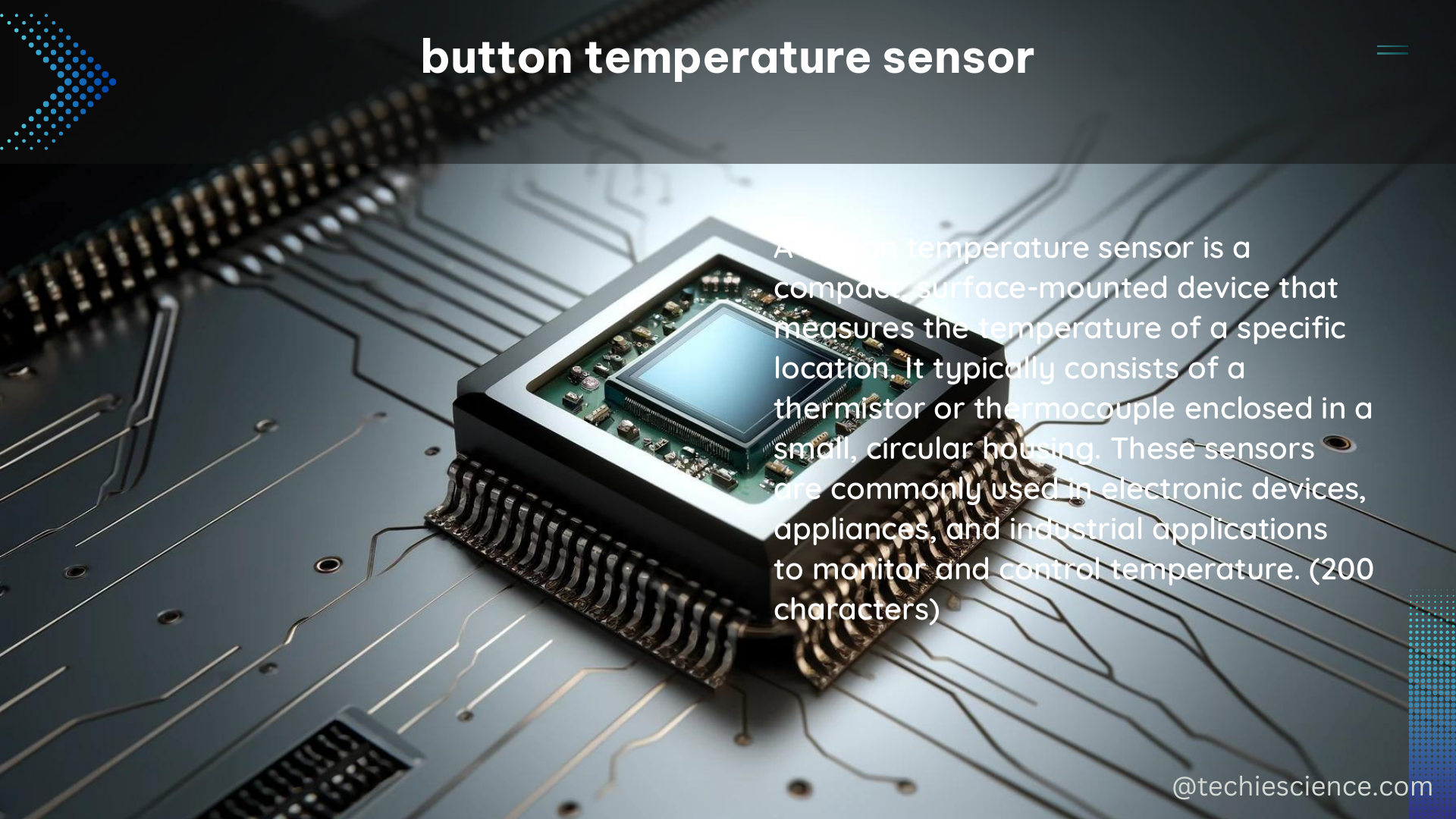The button temperature sensor is a compact and versatile device that measures the temperature of a specific point or area and outputs this information in a format that can be read by other devices or systems. These sensors are widely used in industrial automation, HVAC systems, medical devices, and a variety of other applications where accurate temperature monitoring is crucial.
Temperature Sensitivity and Accuracy
One of the key aspects of button temperature sensors is their temperature sensitivity, which is the degree to which the sensor’s output changes in response to changes in temperature. This sensitivity is typically measured in units of temperature per unit of output, such as degrees Celsius per millivolt (°C/mV). For example, a sensor with a sensitivity of 10 mV/°C would produce an output of 10 mV for every degree Celsius increase in temperature.
Accuracy is another important characteristic of button temperature sensors, which is the degree to which the sensor’s output accurately reflects the true temperature of the object or environment being measured. Accuracy is typically measured as the difference between the sensor’s output and the true temperature, expressed as a percentage of the true temperature or in absolute terms. For instance, a sensor with an accuracy of ±1% would be expected to produce outputs that are within 1% of the true temperature.
Temperature Range and Specifications

Button temperature sensors also have a range of temperatures over which they can accurately measure temperature. This range is typically specified by the manufacturer and is determined by the design and materials of the sensor. Sensors with a wide temperature range are useful in applications where the temperature may vary widely, such as in outdoor environments or in industrial processes.
Some common temperature ranges for button temperature sensors include:
| Sensor Type | Temperature Range |
|---|---|
| Thermocouple | -200°C to 1,800°C |
| Resistance Temperature Detector (RTD) | -200°C to 850°C |
| Thermistor | -40°C to 150°C |
| Semiconductor | -40°C to 125°C |
In addition to temperature range, button temperature sensors may have other specifications that are important to consider, such as:
- Response time: The time it takes for the sensor to respond to changes in temperature.
- Resolution: The smallest change in temperature that the sensor can detect.
- Repeatability: The ability of the sensor to produce the same output for the same input temperature.
- Stability: The ability of the sensor to maintain its accuracy over time.
Sensor Features and Capabilities
Button temperature sensors may also have various features and capabilities that make them more suitable for certain applications. For example, some sensors may be designed to be highly rugged and durable, making them suitable for use in harsh environments. Others may be designed to be very small and compact, making them ideal for use in portable or wearable devices.
Some common features and capabilities of button temperature sensors include:
- Integrated digital output: Sensors with built-in analog-to-digital conversion, allowing for easy integration with microcontrollers and other digital systems.
- Wireless communication: Sensors with wireless capabilities, such as Bluetooth or Wi-Fi, for remote monitoring and data transmission.
- Programmable alarms: Sensors with the ability to trigger alarms or notifications when the temperature exceeds a certain threshold.
- Logging and data storage: Sensors with the ability to store temperature data over time, allowing for historical analysis and trend monitoring.
Temperature Measurement Approaches
When it comes to measuring the temperature using a button, there are a few different approaches that can be taken. One option is to simply take a single reading when the button is pressed and use this value as the current temperature. However, this approach may not be suitable for applications where the temperature is expected to vary rapidly or where a more accurate measurement is required.
An alternative approach is to accumulate temperature data over a period of time and calculate the average value. This can help to reduce the impact of noise or other sources of error in the measurement. For example, the sensor could be configured to take a reading every second and store these readings in memory. Once enough readings have been collected, the sensor could calculate the average value and use this as the current temperature.
Another approach is to use a moving average, which involves calculating the average value of a fixed number of recent readings. This can help to smooth out short-term fluctuations in the temperature and provide a more stable and accurate measurement. For example, the sensor could be configured to take a reading every second and calculate the moving average over the previous 10 readings.
Conclusion
Button temperature sensors are an essential tool for measuring temperature in a wide variety of applications. By understanding the technical specifications and capabilities of these sensors, it is possible to choose the right sensor for a given application and ensure accurate and reliable temperature measurements. Whether you’re working on an industrial automation project, a medical device, or a smart home system, button temperature sensors can provide the precise and reliable temperature data you need to achieve your goals.
References
- Stack Overflow: How to subtract temperature effects from sensor data?
- Vernier: Go Direct® Temperature Probe
- Arduino Forum: Taking and displaying 10 temperature measurements
- Arduino Forum: Best way to measure temperature using button
- Digi-Key: How to Use High Accuracy Digital Temperature Sensors in Health Monitoring Wearables

The lambdageeks.com Core SME Team is a group of experienced subject matter experts from diverse scientific and technical fields including Physics, Chemistry, Technology,Electronics & Electrical Engineering, Automotive, Mechanical Engineering. Our team collaborates to create high-quality, well-researched articles on a wide range of science and technology topics for the lambdageeks.com website.
All Our Senior SME are having more than 7 Years of experience in the respective fields . They are either Working Industry Professionals or assocaited With different Universities. Refer Our Authors Page to get to know About our Core SMEs.